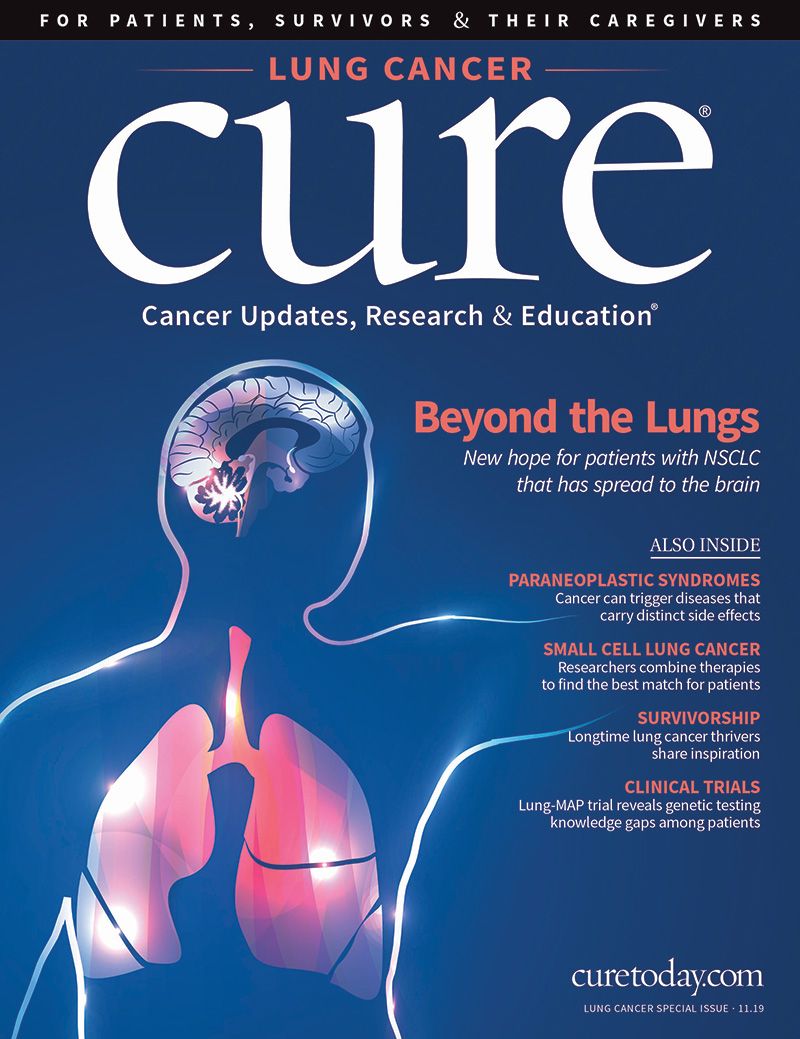Publication
Article
CURE
It's a Great Day to Thrive
Author(s):
New therapies approved following innovative research are increasing survival rates for patients with advanced lung cancer.
When Susan Warmerdam received a stage 4 lung cancer diag- nosis, she was told that she had less than a 2% chance of surviving another five years. Seven years later, she is living well and sharing her story with CURE® readers.
In the face of cancer, she chose to understand the biology of her disease and how it influenced her treatment options, eventually leading her to a clinical trial.
Warmerdam is not alone when it comes to outliving the disease she thought would claim her life, like it did her father’s. New thera- pies approved following innovative research are increasing survival rates for patients with advanced lung cancer.
In one of our feature stories, we hear from longtime lung cancer “thrivers.” You’ll read more about Warmerdam and two other survivors; one is 15 years past diagnosis; the other, seven. Although these individ- uals endured lots of treatment, side effects and struggles along the way, firsthand accounts from them and others continue to inspire and offer hope to other patients and survivors, as well as researchers and health care providers who daily strive to eradicate cancer.
Also inside, CURE® takes a deeper look at the latest therapies for treating patients whose non-small cell lung cancer (NSCLC) has spread to the brain, also known as brain metastases. The cover story examines the role of surgery and radiation, as well as how tumor mutation may affect individual treatment plans. Experts weigh in on how they approach patients with this type of disease.
And for years, the treatment of small cell lung cancer remained stagnant, mainly because of a lack of clinical trials in this disease state. But in recent years, researchers have begun looking into newer techniques that are proving successful in early clinical trials. These trials investigated PARP inhibitors, which are often used in gynecologic cancers, and a combination of immunotherapy with chemotherapy. Earlier this year, the results of one study led to the Food and Drug Administration approval of Tecentriq (atezolizumab) in the first-line setting. The results have many excited about the future, but for now, the standard of care remains the same.
This issue also covers a recent drug approval for metastatic NSCLC, the disparities that exist in the care of people with the disease and — as described by a patient — the silver linings of having cancer.
As always, thank you for reading.





